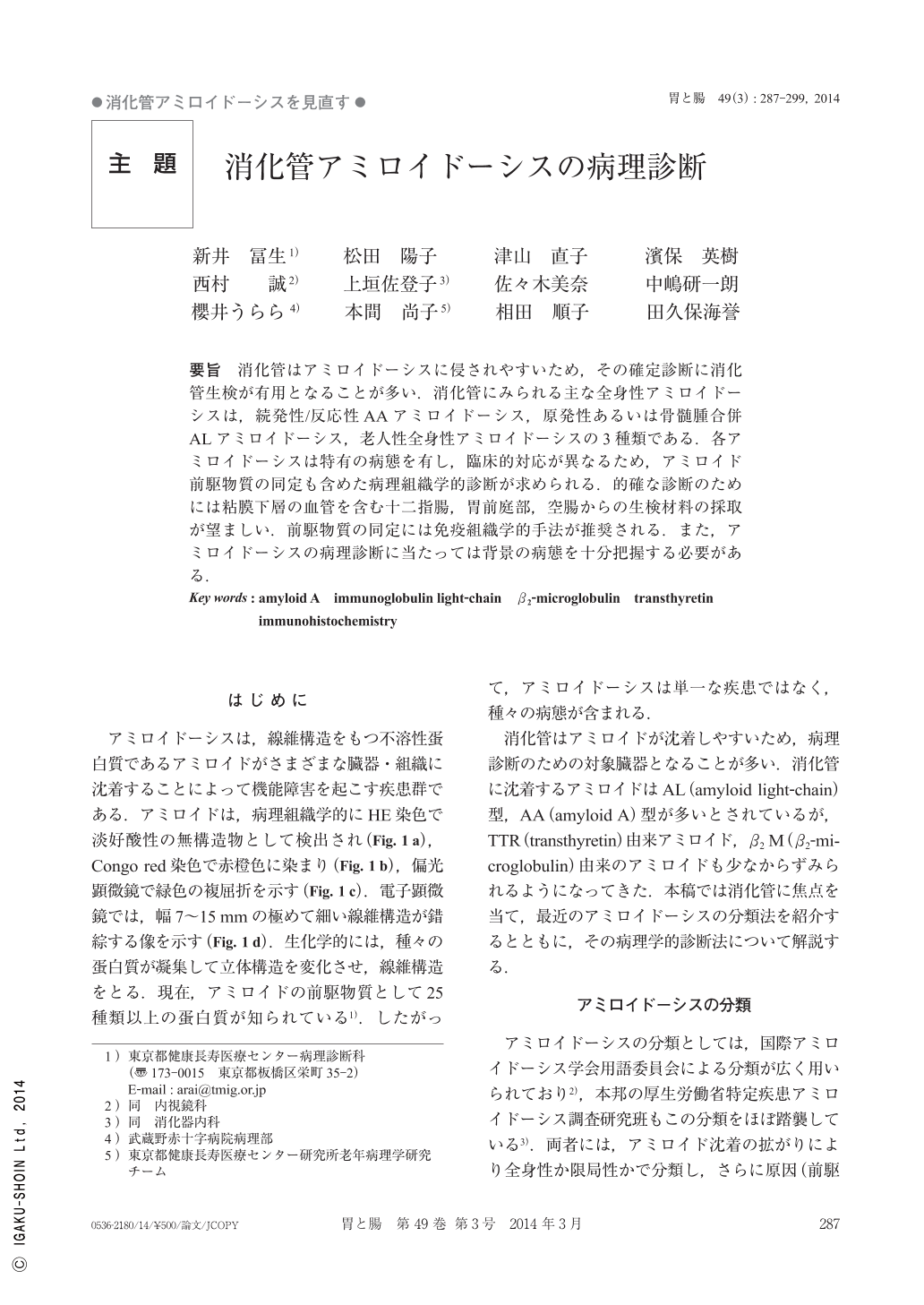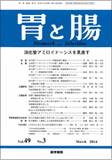Japanese
English
- 有料閲覧
- Abstract 文献概要
- 1ページ目 Look Inside
- 参考文献 Reference
- サイト内被引用 Cited by
要旨 消化管はアミロイドーシスに侵されやすいため,その確定診断に消化管生検が有用となることが多い.消化管にみられる主な全身性アミロイドーシスは,続発性/反応性AAアミロイドーシス,原発性あるいは骨髄腫合併ALアミロイドーシス,老人性全身性アミロイドーシスの3種類である.各アミロイドーシスは特有の病態を有し,臨床的対応が異なるため,アミロイド前駆物質の同定も含めた病理組織学的診断が求められる.的確な診断のためには粘膜下層の血管を含む十二指腸,胃前庭部,空腸からの生検材料の採取が望ましい.前駆物質の同定には免疫組織学的手法が推奨される.また,アミロイドーシスの病理診断に当たっては背景の病態を十分把握する必要がある.
Since the GI(gastrointestinal)tract is commonly affected by amyloidosis, it is a target organ for histopathological diagnosis. Most systemic amyloidosis occurring in the GI tract contains secondary/reactive amyloid A amyloidosis, primary or myeloma-related amyloid light-chain amyloidosis, and systemic senile amyloidosis. Each type of amyloidosis has specific clinicopathological features and treatments. Thus, biopsy of duodenal, gastric antral and/or jejunal tissues containing submucosal small vessels is required for precise diagnosis. Immunohistochemistry using anti-amyloid A, light chain of immunoglobulin, β2-microglobulin, and transthyretin antibodies is strongly recommended for subclassification of amyloidosis. When making a diagnosis in patients with amyloidosis, pathologists should be aware of background diseases or conditions.

Copyright © 2014, Igaku-Shoin Ltd. All rights reserved.


